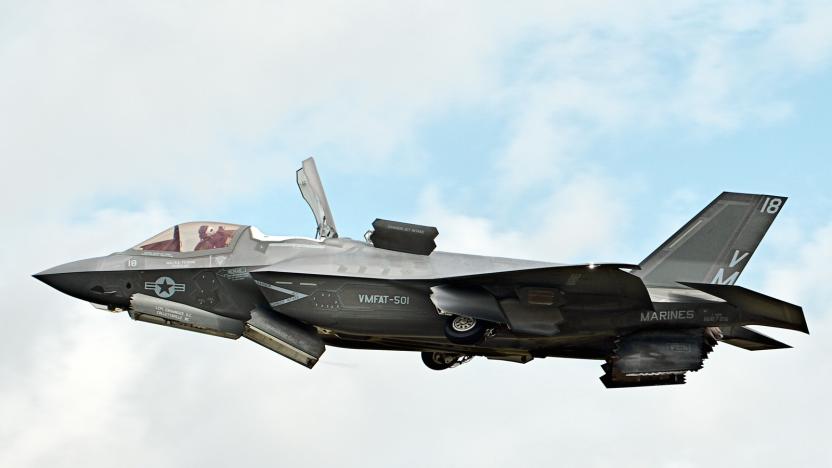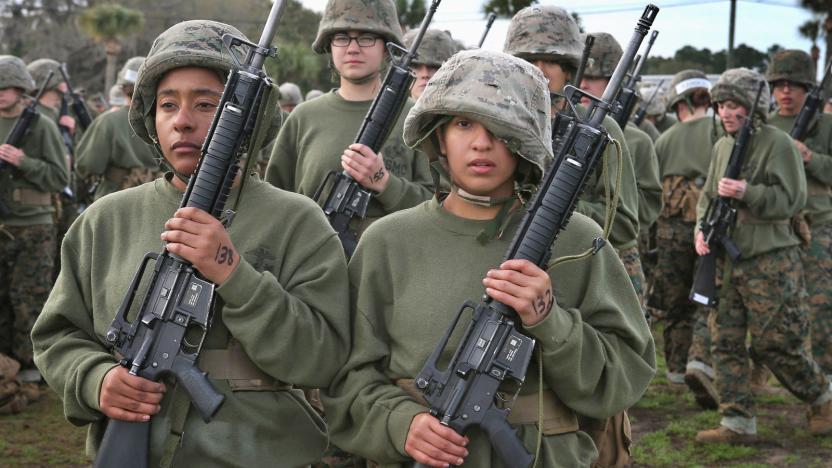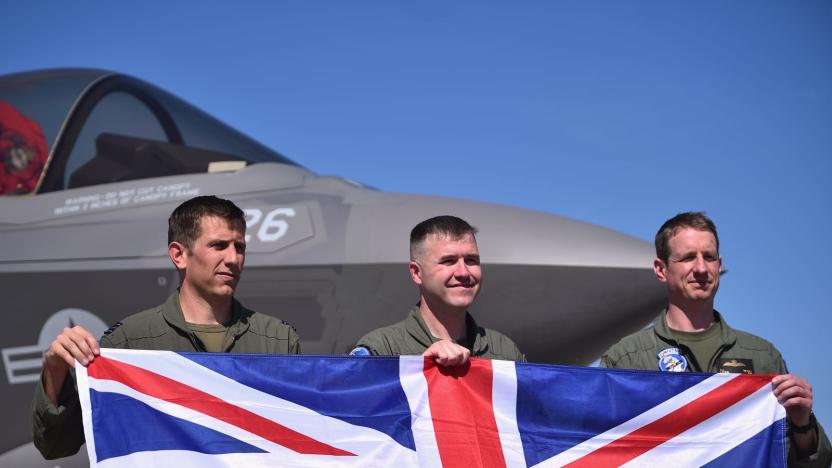usmc
Latest

F-35 may see combat in 2018
After a very long and problematic development process, the F-35 Lightning II is about to serve on the front lines. The US Marine Corps is deploying the F-35B (the short takeoff and vertical landing variant) to ships in the Central and Pacific Command theaters in the spring and summer of 2018. The 13th Marine Expeditionary Unit is traveling aboard the USS Essex, which is headed to the Middle East, while the 31st will be attached to the USS Wasp and might head to the coast of North Korea.

Marine Corps guidelines now ban online sexual harassment
The US Marine Corps has already started to crack down on soldiers sharing nude photos of women soldiers through internet groups, but it now has a better way of tackling this behavior. The military branch has published updated guidelines that explicitly forbid various forms of online sexual harassment, including "indecent viewing, visual recording, or broadcasting." Marines represent the Corps and their units "at all times," and that includes when they post on social networks.

F-35 completes first transatlantic flight on delivery to UK
Marines forces on either side of the Atlantic have depended on air support from the versatile AV-8B Harrier jump jet and its marvelous Vertical Take-Off and Landing (VTOL) capability to lift into flight without a runway. But the venerable aircraft has slowly been phased out in favor of the upcoming F-35 Lightning II fighter plane, which will come in a Short Take Off and Vertical Landing (STOVL)-equipped 'B' version. Despite scandals over its bloated budget and delayed schedule, the first F-35B intended for the UK has just finished the jet's first recorded transatlantic flight as it lands in Britain in a video posted by the US Marine Corps.

Marine Corps finally declares the F-35B ready for combat
After years of testing and development, production setbacks and cost overruns and more than half a trillion dollars invested, the F-35B fighter jet has finally passed its biggest milestone to date: it's achieved initial operational capability (IOC) within the US Marine Corps. That means that the F-35B can now be deployed around the world and employed in active combat.

Watch an AlphaDog robot venture into (simulated) battle for the first time
They grow up so fast, don't they? It seems like only yesterday that Boston Dynamics' AlphaDog (aka LS3) robot was finding its legs, and yet it has already gone out on training exercises with the US Marine Corps for the first time. The cargo-hauling machine dutifully trotted behind a Marine squad traversing a simulated combat zone in Hawaii, proving that it could both navigate rough terrain and resupply other platoons that would otherwise have to wait for an ATV.

Boston Dynamics shows a quieter, more thoroughbred AlphaDog to DARPA and the Marines (video)
When we last saw Boston Dynamics' AlphaDog (aka LS3), it was strutting through outdoor trials with the subtlety of a nuclear missile: for all that noise, it might as well have been holding a "shoot here please" sign broadcasting American soldiers' positions to everyone in the forest. Several months later, the company is showing both DARPA and the Marine Corps a refined version of its load-carrying robot that has clearly been through a few rounds of obedience school. While we still wouldn't call the four-legged hauler stealthy, it's quiet enough to avoid the role of bullet magnet and lets nearby troops chat at reasonable volumes. And yes, there's new tricks as well. AlphaDog can speed up its travel over difficult surfaces and move at up to a 5MPH jog, all while it's following a human squad. DARPA and the Marines recently began testing and improving the robot over a two-year period that should culminate in an Advanced Warfighting Experiment with the Marines to test viability under stress. If AlphaDog passes that bar, there's a good chance many on-foot soldiers will have a mechanical companion -- and quite a weight lifted off of their shoulders.

Singapore to hand out iPads to its soldiers
The Defence Ministry of Singapore said on Monday that it will be issuing 8,000 iPads to new recruits this year. Armed with the iPad, new soldiers will be able to snap photos and videos of the battlefield, which can be uploaded to a central database. They can also communicate with officers and other soldiers via messaging. The Singapore Armed Forces wants to expand the iPad's capabilities and is working with private contractors to create secure apps for military use. The iPad program begins this year with new recruits and will extend to other soldiers next year. This is not the first example of military units using the iPad and other iOS devices. US Marine Corp aviators recently replaced their paper-based navigation system with one driven by the iPad, and the Army is working on its own secure App Store. In the UK, soldiers are using the iPad to train for combat before their deployment for Afghanistan. The Army App Store is work in progress, while the USMC and UK programs are considered an early success by their respective military leaders.

Marine Corps aviators depend on iPad
Aviators for the United States Marine Corps (USMC) in Afghanistan have ejected heavy stacks of paper charts and grid reference graphics from their cockpits and replaced them with the iPad according to a report by Tony Osborne for The Shephard Group. The popularity of the iPad among marine flight crews took off last November when one Cobra pilot figured out how to load digital maps onto the device. In Afghanistan, identifying compounds and landmarks from the air can be difficult. To eliminate guesswork and better coordinate missions with international ground forces, USMC pilots arm themselves with a plethora of maps of the region. Prior to digitization, paper charts and grids would fill cramped cockpits and require additional training and attention to read correctly. The iPad saves space and allows pilots to search for locations with a few quick taps of their fingers, making it significantly easier for aviators to identify compounds and quickly offer air support. "It's a game changer," Capt. John Belsha told The Shephard Group. "It's all about sharing situational awareness and using the iPad is much better than using a paper chart." Work is reportedly underway to integrate the iPad into aircraft in the US to allow Marine aviators to receive flight training with digital maps. USMC pilots aren't the only group embracing iPads in the cockpit. Earlier this month, Alaska Airlines announced plans to replace various flight, systems, and performance manuals (and eventually paper aeronautical charts) with digital copies on the iPad. Apple's tablet would eliminate up to 50 pounds of paper that its pilots must lug onto every flight.

Marines field test solar panels by day, watch Gomer Pyle by night
United States Marines are among the best-equipped soldiers on the planet, but more gadgets mean extra batteries to haul, adding dozens of pounds on extended missions. Troops in Afghanistan recently put that hot Middle Eastern sun to use, swapping spare batteries for placemat-size solar panels on a three-week patrol. Batts were replaced with extra bullets, so the soldiers didn't get off easy, but they were also able to reduce generator usage, making a significant dent in fuel consumption. It will be several years before all soldiers charge their radios, night vision goggles, and GPS devices using the sun, but the Marine Corps hopes to cut fuel use in half by 2025, so it's only a matter of time before solar-powered gadgets have a more permanent home on the battlefield. Sha-zam!




